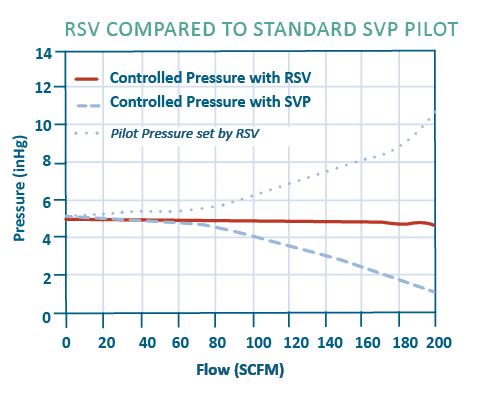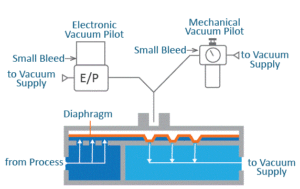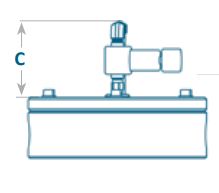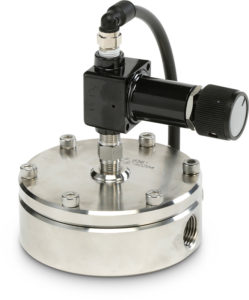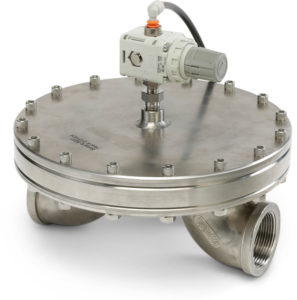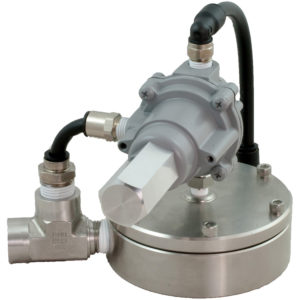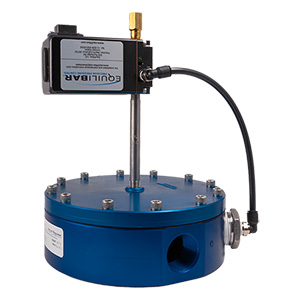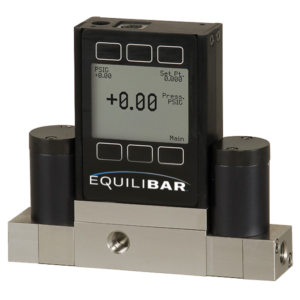Note: While Equilibar EVRs are compatible with extreme chemical conditions, our vacuum pilot regulators and fittings are not. The flow through the vacuum pilot is from atmospheric to the inlet of the vacuum supply pump, so no chemicals should enter the vacuum pilot during normal operation. There is always a small bleed through the vacuum pilot regulators. Please see the bottom of our safety design page for more information. If you are using extreme chemicals, please speak to an application engineer for details.
Learn more about how our vacuum regulators work.
The table below shows the benefits of the various vacuum pilot control layouts. For information about how to install a vacuum pilot regulator, watch the video lower down on this page.
Contact an Equilibar application engineer with questions or for help determining the best design for your vacuum application.
Vacuum Pilot Control Options
| Open Loop Control | Closed Loop Control | |
|---|---|---|
| Option Benefits |
|
|
| Manual Controller Approach | 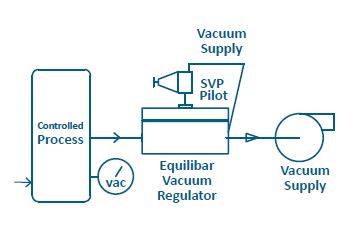 | 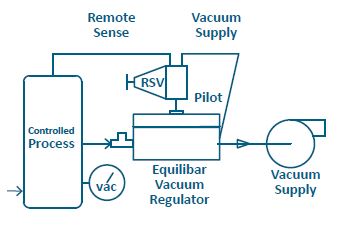 |
| Electronic Controller Approach | 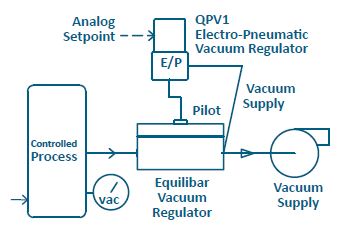 | 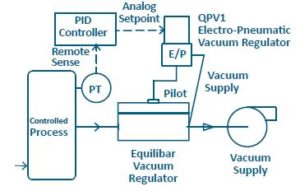 |
Customers can use the standard vacuum pilot regulator, SVP1 and SVP2, or request an upgrade to the RSV remote sense pilot regulator or the QPV1 or EPR-30 electronic pilot regulator. The table below outlined the options and types of pilot regulators.
Vacuum Pilot Regulators
*C Dimensions are approximate
Electronic Vacuum Pilot Regulator Details
For precise electronic control, using an Equilibar QPV or EPR 30Hg electronic vacuum pilot regulator is an excellent option. They can be mounted near the central process control system for easy process integration or mounted directly to the EVR. Both are available with analog signals of 4-20 mA and 0-10 VDC.
It is easy to upgrade from a manual to an electronic vacuum pilot regulator. Watch our video at right for a demonstration of installing a QPV1 as a pilot regulator for an EVR.
These electronic vacuum regulators may be combined with any Equilibar EVR product in processes where computer control is desired.
Remote Sense Vacuum Pilot Regulator Details
For optional remote sense control, the Equilibar Remote Sense Vacuum (RSV) regulator is available. The RSV is a highly sensitive manual vacuum pilot regulator designed specifically to provide closed loop control of any Equilibar vacuum regulator (EVR). The RSV has a remote sense port that can be connected to a line near the controlled process or to the inlet of the EVR. The RSV works by using this remote sense input to carefully adjust the vacuum force applied to the pilot reference port of the EVR.
During high flow conditions, the RSV increases the vacuum force applied to the pilot reference port to open the vacuum regulator more fully. The opposite occurs during low flow conditions. This active pilot adjustment coupled with the instantaneous response of the Equilibar EVR keeps the pressure stable from the lowest flow rates to the maximum capacity of the EVR. See plot at right.
The RSV can be integrated with any Equilibar vacuum regulator to provide improved vacuum control at a wider flow range. A remote sense vacuum pilot is useful in processes where flow rates are varying widely. For installation information, see the RSV installation manual.
